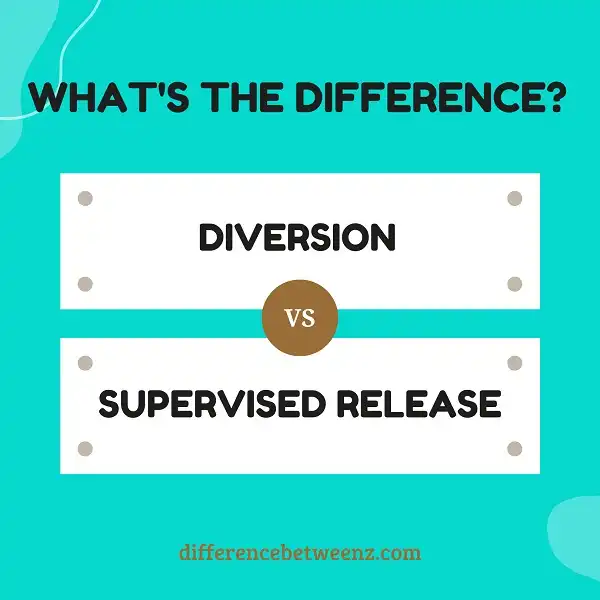When it comes to criminal justice, there are different types of probation and parole that a person can be placed on. Two of the most common are diversion and supervised release. While they have some similarities, there are also some key differences between the two. In this blog post, we will explore those differences and help you understand which one is right for you or a loved one.
What is Diversion?
Diversion programs are a type of alternative sentencing that diverts offenders away from the traditional criminal justice system. Diversion programs can take many different forms, but they all aim to provide offenders with the opportunity to avoid a criminal record and make positive changes in their lives. Diversion programs typically involve some form of counseling or community service, and they may also include drug treatment or anger management classes.
Many diversion programs are run by nonprofit organizations or government agencies, and they usually require offenders to complete the program within a certain period of time. Diversion programs have been shown to be effective in reducing recidivism, and they can be an important tool in the fight against crime.
What is Supervised Release?
Supervised Release is a type of court-ordered probation that is imposed after an individual has been convicted of a crime and served a portion of their sentence. The term of Supervised Release is typically set by the court at the time of sentencing and can range from a few months to several years. While on Supervised Release, individuals are required to comply with a number of conditions, which may include regular check-ins with a probation officer, meeting employment requirements, and attending counseling or therapy sessions. Supervised Release is meant to help individuals successfully reintegrate into society and reduce the risk of recidivism. In some cases, violations of Supervised Release can result in the individual being sent back to prison to serve the remainder of their sentence.
Difference between Diversion and Supervised Release
- Diversion and supervised release are both alternatives to incarceration. Diversion is a program that allows a defendant to avoid jail time by completing certain requirements, such as drug counseling or community service. Supervised release is a program that allows a defendant to be released from jail early if they agree to abide by certain conditions, such as meeting with a parole officer or attending counseling sessions.
- While both programs can help defendants avoid jail time, they differ in several key ways. Diversion programs are typically only available to first-time offenders, while supervised release programs are available to all defendants. In addition, diversion programs generally last for a shorter period of time than supervised release programs.
- Finally, defendants who participate in diversion programs typically have their charges dismissed after they successfully complete the program, while defendants who participate in supervised release programs still have to go to trial and be sentenced by a judge. Ultimately, the decision of whether to participate in a diversion or supervised release program depends on the individual circumstances of each case.
Conclusion
The terms diversion and supervised release are often confused, but they have significant differences. Diversion is an informal process that allows first-time offenders to avoid criminal prosecution by completing a rehabilitation program. Supervised release, on the other hand, is a formal process that applies to defendants who have served time in prison or jail. If you’ve been charged with a crime, it’s important to understand the difference between diversion and supervised release so you can make the best decision for your case.


